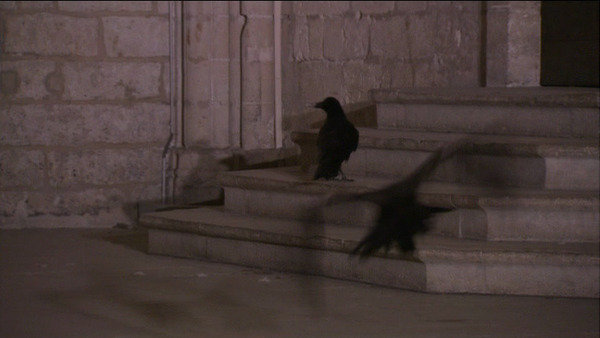Two exhibitions
dal 26/9/2013 al 8/2/2014
Segnalato da
Andy Warhol
Douglas Gordon
Lena Maria Thuring
Bruce Nauman
Carol Rama
Ricco Wassmer
Paul Chan
Wolfgang Tillmans
Scott C. Weaver
Nikola Dietrich
26/9/2013
Two exhibitions
Kunstmuseum Basel - Museum fur Gegenwartskunst, Basel
every time you think of me, I die, a little: this exhibition draws upon the museum's own collection to address the memento mori, a symbol of vanitas, in the work of Andy Warhol and Douglas Gordon. It is complemented by other works by Bruce Nauman, Carol Rama, Ricco Wassmer, Paul Chan, Wolfgang Tillmans, among others. Contemporary: Lena Maria Thuring, Manor Art Price Basel 2013, with her carefully crafted films.

every time you think of me, I die, a little
works of Andy Warhol and Douglas Gordon
Curator Nikola Dietrich
This exhibition draws upon the museum’s own collection to address the memento mori, a symbol of
vanitas, in the work of Andy Warhol and Douglas Gordon. When considered in art historical
retrospective, it appears most frequently as a still life motif representing the transience of symbolic
objects such as rotting fruit or skulls. Gordon’s video installations “24 Hour Psycho Back and Forth
and To and Fro” and “Looking down with his black, black, ‘ee”, both 2008, provide a conceptual
starting point for this thematic approach to the exhibition. In the latter, tripartite work ravens are
hopping around on the steps of a Gothic church, or looking down from the roof. Here Gordon is
alluding to the medieval notion of the raven as a harbinger of bad luck, symbolising evil or the
messenger of death.
Familiar criteria of good and evil or events based on elements of memory are recurrent themes in
Gordon’s work. His first and probably most famous video installation “24 Hours Psycho”, 1993, is
modelled on an icon of cinematic history – Alfred Hitchcock’s “Psycho” (premiere 1960). He
addressed this film again in 2008, and created the installation featured here. The same film is
shown twice on two screens positioned next to each other, and the cinema film, which originally
lasted 110 minutes, is extended to 24 hours here. The film is projected forwards on one screen and
backwards on the other, so new pictorial combinations constantly emerge. The films coincide, at the
mid-point in terms of time, with the tragic murder scene, and the visual doubling this produces lends
an extremely monumental quality; the extreme deceleration of events and the lack of an acoustic
give the individual image a directness that has a dramatic effect on our perceptions. “Because the
images follow one another at such a slow rate, you cannot possibly remember them. The past
continues, and the future never happens, so everything remains in the present” (D. Gordon).
These works are confronted with Andy Warhol’s paintings Optical Car Crash (1962) and Black and
White Disaster #4 (1963), in which he addresses the themes of death and disaster on the basis of
existing model images disseminated by the mass media. Repeated repetition of the motif transforms
it into an element that nullifies the terror. In Warhol’s film Kiss (1963/1964), various couples are
shown kissing for three minutes in each case, and projected in slow motion, which makes the
apparently stiff pose look like a parody of the typical Hollywood film kiss.
The exhibition is complemented by other works from the Basel Public Art Collection, the Emanuel
Hoffmann-Foundation and some additional loans. These include Bruce Nauman, Carol Rama and
Ricco Wassmer, and also Paul Chan and Wolfgang Tillmans, among others.
Sponsors:
Fonds für künstlerische Aktivitäten im Museum für Gegenwartskunst der Emanuel Hoffmann-
Stiftung und der Christoph Merian Stiftung and Stiftung für das Kunstmuseum Basel
-----
27.09.2013 - 05.01.2014
Lena Maria Thüring
Manor Art Price Basel 2013
Curator Scott C. Weaver
The carefully crafted films of Lena Maria Thüring (*1981, Basel) are what she describes as a
reflection upon social systems and their constructions by way of individual stories. Her works
demonstrate her fascination with the human experience, and specifically the narratives intertwined
through memory, history and place. Thüring allows her protagonists’ stories to unfold and inform the
structure of her films. Furthermore, the more compositional, or filmic possibilities of juxtaposition
and contradiction contribute beautifully to her sensitive negotiation of complex subject matter. In
Thüring’s lush and layered films, the relationship between language and image is paramount to her
approach and production, providing plenty of space for multifarious narratives and metaphors to
emerge.
Thüring has developed a new, large-scale installation especially for the 2013 Manor-Kunstpreis
Basel exhibition in the Museum für Gegenwartskunst. This is her largest video production to date.
Image: Douglas Gordon, Looking Down With His Black, Black Ee, 2008 (Still). Video Installation Dimensions variable, Installation view Dox, Prague, 2009. Photo Studio lost but found / Frederik Pedersen © Studio lost but found / VG Bild-Kunst, Bonn 2013
Press office:
Christian Selz Tel +41 61 2066206 Fax +41 61 2066252 pressoffice@kunstmuseumbasel.ch
Preview of the exhibition on Friday, 27 September 2013, at 6.30 p.m.
Kunstmuseum Basel, Museum für Gegenwartskunst
St. Alban-Graben 16 CH-4010 Basel
Opening Hours:
Tue - Sun 11 a.m. – 6 p.m.
closed on Monday
Admission:
Adults over 19 years CHF 21 / EUR 19
Teenagers 13-19 years CHF 8 / EUR 7
Students 20-30 years CHF 8 / EUR 7
Disabled visitors with ID CHF 8 / EUR 7
Groups (over 19 pers.) CHF 16 / EUR 14



